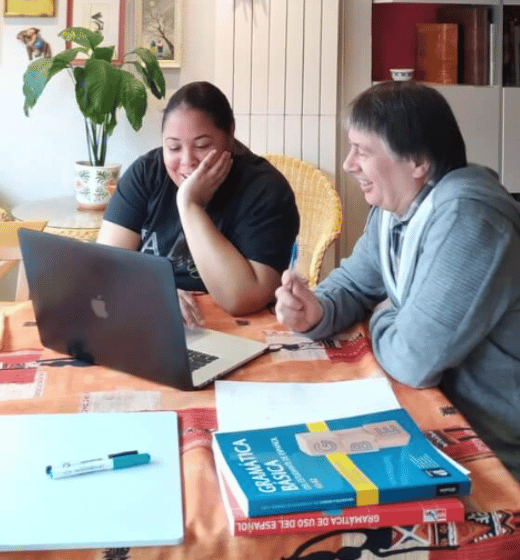

Learning Spanish or any foreign language can happen in very different ways. Traditional classroom learning relies on formal lessons, textbooks, and grammar drills in a school setting. Immersion learning, by contrast, surrounds the student with the target language (Spanish) in everyday life. Spanish immersion and classroom learning are popular approaches used by language learners around the world. In this post, we compare the two approaches, drawing on academic research and expert insight.
In general, full Spanish immersion living and learning en español, a form of foreign language immersion, tends to speed up language acquisition, boost fluency, and deepen cultural understanding by exposing students to different cultures. These immersion programs use an integrated approach to language and content instruction, immersing students in their chosen language. For example, a review of language immersion research notes that such programs “have heralded benefits such as academic achievement, language and literacy development in two or more languages, and cognitive skills”. Researchers have studied the outcomes of bilingual education and foreign language immersion, showing that bilingual education models, including immersion, benefit bilingual children in terms of academic achievement and language proficiency. Students in these programs often become proficient in more than one language, supporting learning in two languages, and what they have learned extends to both language and cognitive skills.
In other words, learning Spanish through immersion can improve not only your linguistic abilities but also your thinking skills, without hindering your native (English) literacy.
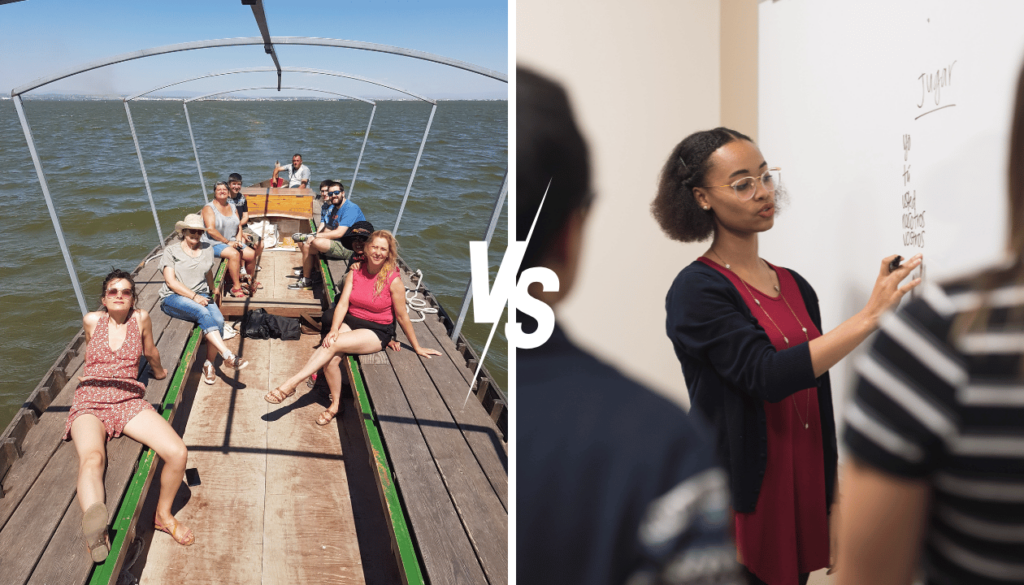
Traditional Classroom Learning
In a traditional classroom setting, Spanish is taught as a subject. Students sit at desks, follow a set curriculum, and learn new vocabulary and grammar rules through lectures, textbooks, and exercises. Classes often use the students’ native language (e.g. English) to explain Spanish. This structure has clear advantages: it provides a step-by-step, systematic path. As one guide explains, “when you’re just starting out… having the structure of classroom education can be very beneficial”: trained teachers introduce grammar and vocabulary in small steps and make sure you grasp each concept before moving on.
Classroom learners typically get a well-rounded experience covering all skills – speaking, reading, writing, and listening under the guidance of an instructor. In fact, research notes that classroom instruction often builds strong mechanics: “Classroom learners are typically stronger on the mechanics and grammar of a language”. In practice, this means classroom students might excel at understanding grammar rules, verb tenses, and written literacy, as well as rehearsing dialogues and vocabulary in a controlled environment.
- Structured Curriculum: Classrooms follow a sequenced plan. You learn spelling, grammar rules, vocabulary lists, and do homework, with a focus on word recognition, word knowledge, and spelling as part of literacy development. This is similar to English Language Arts classes (reading and writing) in school, but for Spanish. Such a structure is especially helpful for beginners, as teachers “know how best to structure a class so that students can make progress in steps”.
- Foundational Skills: Students build a foundation in reading and writing Spanish. For example, a Spanish class may emphasize reading short stories or writing essays to strengthen literacy and grammar. This builds reading comprehension and writing ability in the language.
- Immediate Feedback: In class, you have a teacher and peers. A teacher corrects your pronunciation and grammar in real time, setting you on the right path. As one blog notes, a teacher is likely to speak “well” in Spanish, helping you form good pronunciation habits and “correct grammar and vocabulary”.
However, classroom learning also has limits. It often isolates the language to class hours and doesn’t immerse you in real, everyday situations. Students may learn words and rules, but have few chances to practice talking with native speakers outside of class. The focus on writing and translation can make spoken conversation feel awkward. For instance, immersion advocates point out that classroom learners may pick up habits or accents that “other speakers in other parts of the world have trouble understanding”. In short, classrooms emphasize form and rules, but can lag in developing fluid conversation and cultural nuance.
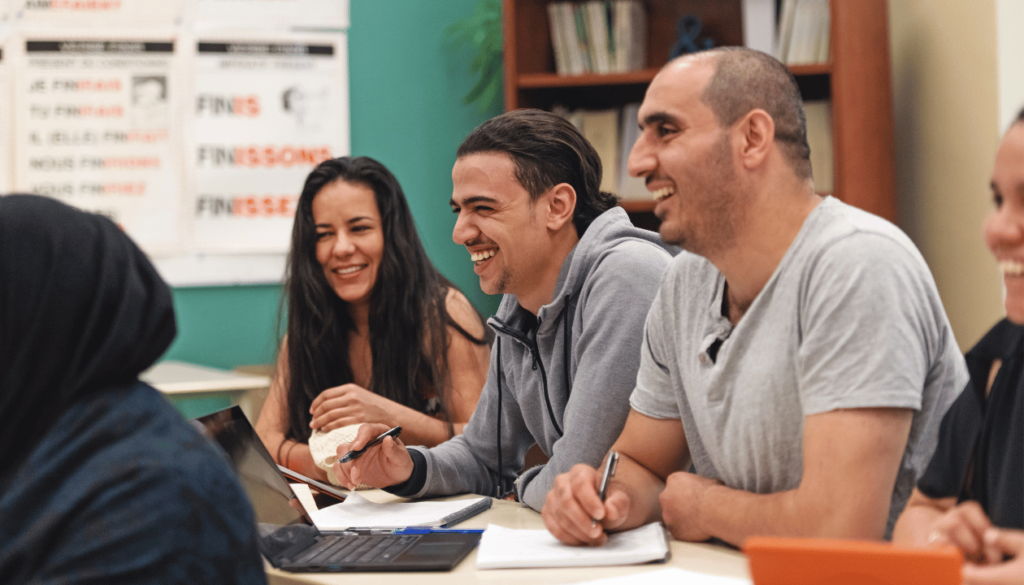
Immersion Learning
Immersion learning takes the opposite approach: you learn Spanish by living in it. In an immersion program, the target language becomes the medium for almost everything – you speak, read, and think in Spanish throughout the day. For example, in a Spanish immersion, you might stay with a host teacher or family in Spain, attend classes taught entirely in Spanish, and do daily activities (shopping, cooking, sightseeing) using only Spanish. This is a form of experiential learning, where knowledge comes from direct experience.
By definition, immersion “uses a student’s environment as the primary means of teaching”. The idea is to surround the learner with Spanish 24/7. In practice, this means: you hear constant spoken Spanish (TV, street chatter, radio), you read Spanish signs and menus, and you must reply or ask questions in Spanish. Unlike a classroom, immersion is not regularly interrupted by the native language – it forces you to adapt. As one immersion student observed, this creates “a rapid pace of language learning and the ability to pick up a language with a minimal accent”. In other words, when your brain is set to Spanish mode all day, vocabulary and listening skills grow almost by osmosis.

Key features of immersion programs include:
Constant Spanish Practice:
You constantly practice Spanish in real-life situations. Shopping in a market, ordering at a restaurant, or chatting with a friend all become Spanish lessons. As Cambridge University notes, immersion means students “are exposed to the language they’re learning in an immersive way… [and] exhibit higher levels of fluency”. You learn the vocabulary and phrases people actually use, including slang and colloquialisms that are rarely covered in textbooks. Spanish Express points out that in immersion, “you learn how to speak and understand the language in real-life situations,” picking up idioms and slang that a classroom would miss.

Cultural Immersion:
You also immerse yourself in culture. Every day you experience Spanish customs, food, gestures, and way of life. Immersion programs expose students to a variety of cultures, deepening their intercultural understanding and appreciation. This cultural context helps reinforce the language. For example, you learn to use polite forms, jokes, or local expressions naturally. Immersive experiences give insight into how language and culture intertwine. One travel guide notes that being “surrounded by [Spanish]… from street signs to casual chatter” helps you understand the language holistically, not just as abstract rules.
Accelerated Learning:
Because immersion forces you to communicate, progress can be very fast. Research suggests that immersion learners acquire grammar and vocabulary faster than classroom students once they reach a basic level. Researchers have found that students in immersion settings have learned not only language proficiency but also enhanced cognitive skills, such as problem-solving and critical thinking, at a faster rate. Spanish Express explains that when the brain works differently in an immersion setting, it “helps you to pick up grammar rules and new vocabulary faster than in a classroom setting”. In short, immersion harnesses the brain’s natural language-learning abilities, similar to how children rapidly learn a first language by constant exposure.
Natural Fluency:
Immersion tends to produce more natural speaking ability. You practice speaking every day with native speakers, often using your chosen language for daily communication, so your accent and intonation improve. Over time, the language feels more “normal.” As one student blogger puts it, classroom learners learn the rules, but immersion students “speak more like a native”. Living with native speakers (for example, in a homestay) means you overhear authentic speech and gradually begin to think in Spanish rather than translating from English. Immersion programs often result in proficiency in two languages, supporting bilingualism and biliteracy.
Cognitive Benefits:
Immersion can also sharpen the mind. Studies have found that bilingual immersion (even just a year) can give children cognitive advantages like improved problem-solving and mental flexibility. Bilingual children in immersion and bilingual education programs often demonstrate enhanced abilities to solve problems, showing greater cognitive flexibility and critical thinking skills compared to their monolingual peers. Spanish Express cites research that immersion learners often have “superior problem-solving skills”. In addition, being bilingual improves metalinguistic awareness, the ability to understand how language works, which can even help reading in your first language.
Challenges:
Immersion is not always easy. Beginners may feel overwhelmed at first if they have no Spanish knowledge. Without a basic vocabulary, understanding spoken Spanish can be frustrating. However, with supportive teachers (who may use visual cues or gestures) or a gradual entry (some programs ease non-Spanish speakers into the environment), most learners adapt quickly. Even when it’s challenging, the immersive environment constantly pushes you to communicate, which ultimately builds confidence. As one immersion participant notes, the initial confusion “kept me laughing, and kept me working hard to learn” until that breakthrough moment arrived.
Immersion vs Classroom: A Side-by-Side Comparison
Both approaches develop language skills, but in different ways:
Foreign language immersion uses an integrated approach, combining language and content instruction so that students learn academic subjects through the target language. This method promotes bilingualism, biliteracy, and cognitive development.
In foreign language immersion programs, students are exposed to the target language for a significant portion of the school week, often at least 80% in preschool and kindergarten, and 65% or more in grades 1-5. This consistent exposure each week helps students achieve proficiency in more than one language, often reaching near-native levels. In contrast, traditional classroom language learning typically involves fewer hours per week and focuses more on vocabulary and grammar, which may result in slower progress toward fluency and less integrated academic achievement.
Learning Focus:
In the classroom, the focus is on form: grammar rules, written exercises, and drills. Teachers explain why sentences are structured. In immersion, the focus is on use: communicating needs and ideas in real situations. You learn grammar implicitly by seeing and using it, not by memorizing charts. For example, a classroom might teach the future tense with exercises, while an immersion student picks it up by planning tomorrow’s activities in conversation.

Skills Emphasis:
Classroom learning tends to produce precise reading and writing ability, including the development of word recognition and spelling skills, and a clear understanding of grammar. Immersion training tends to excel at speaking and listening comprehension. As one educator notes, immersion learners are “more comfortable in day-to-day conversation” and often acquire a more native-like speaking style. Conversely, classroom students may be more accurate with written Spanish but slower at spontaneous speaking.
Vocabulary and Usage:
Immersion exposes you to a wider range of vocabulary in context, idioms, slang, and current expressions that class might not cover. You learn words as you need them in daily life. Classroom vocabulary often centers on textbook topics (school, family, etc.) and may feel outdated or limited. Immersion teaches idiomatic usage quickly: you’ll learn phrases like “¿Qué haces?” (What are you doing?) or local slang, naturally, which a classroom might overlook.
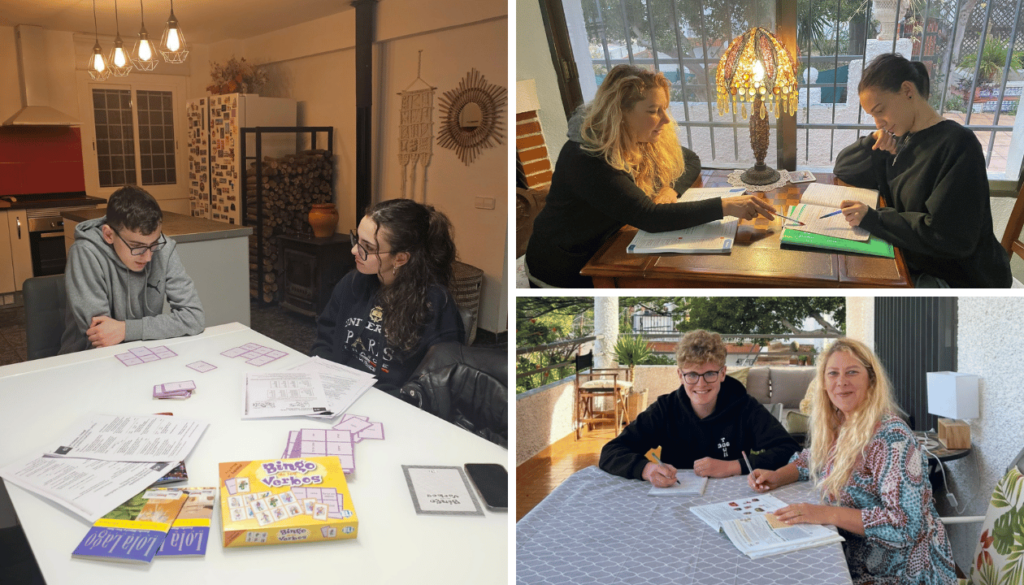
Cultural Understanding:
Immersion programs inherently teach culture along with language; you learn customs, cultural nuances, and social etiquette. This deepens communication skills. Traditional classes may include cultural notes, but they usually remain academic. Immersion makes you live the culture, which can accelerate understanding. For instance, Spanish Express emphasizes that immersion students not only acquire language skills but also gain rich “insights into learning Spanish… unlike standard courses”.

Fluency and Confidence:
Because immersion provides constant practice, students often reach fluency faster. Research and experts agree: students in bilingual immersion programs typically achieve high proficiency in the second language while still performing well academically in other subjects. They “score as well as their non-immersion peers in reading (in English) and math”, meaning immersion did not set them back in school. In fact, children in such programs often outperform their peers and gain confidence using both languages.

Academic and Cognitive Gains:
Classrooms can prepare you for standardized tests and formal writing, but immersion builds multitasking brain skills. Dual-language education has been linked to cognitive development. Studies cited by Spanish Express show that just 1–3 years of immersion can yield measurable cognitive advantages in children. Researchers have found that immersion students develop enhanced abilities to solve problems, demonstrating better cognitive flexibility and critical thinking skills. In summary, immersion often improves both language and general problem-solving ability.
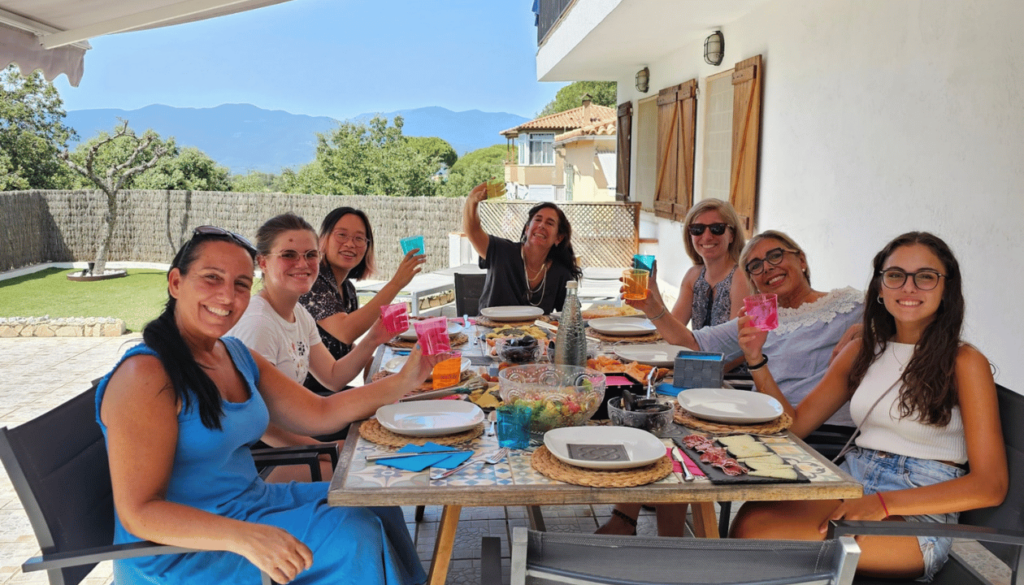
In short, traditional classes give you a solid foundation and understanding of how Spanish works, while immersion turns that knowledge into fluent, confident communication. Many experts suggest a hybrid approach: start with some classroom study to build basics, then immerse in Spanish to push toward fluency. For instance, Go Overseas recommends learning a bit of Spanish first and then using immersion to take skills “to the next level”.
Why Immersion Often Wins Out
Given the comparison, it’s clear why many prefer immersion. Foreign language immersion programs are popular around the world, offering students the chance to experience language and culture firsthand. The total exposure forces your brain to adapt. As Spanish Express bluntly puts it: “Immersion stands out as the most effective path to mastering Spanish fluency”. By living the language – speaking only Spanish for weeks, often for at least 80% of the school week in preschool/kindergarten and 65% in grades 1-5 – you learn subtleties and confidence that a classroom alone rarely provides. Immersion programs emphasize real-life practice at every turn.

For example, SHIP (the Spanish Homestay Immersion Program) highlights activities like guided conversations during daily chores and cultural excursions as interactive Spanish lessons, so that Spanish becomes second nature.

Research backs up this claim. Numerous studies have found that students exposed to a foreign language immersion Spanish environment develop stronger speaking fluency and often “approach native-like competence”. Children are especially primed for this: early immersion taps into the brain’s natural language-learning window. Cambridge University reports that immersion yields remarkable fluency, “particularly when motivation to learn and absorb the language is high”. In other words, when you see Spanish as part of daily life, you become highly motivated – you want to belong in the community – and that social drive greatly enhances learning.
Even beyond language, the cultural immersion and everyday problem-solving practice make the experience rewarding. Spanish Express notes that immersion students often acquire not just words, but confidence and a genuine connection to Spanish-speaking culture. As one SHIP instructor notes, living with hosts “boosts your confidence and communication skills in Spanish. This hands-on approach ensures that speaking Spanish becomes natural”.
Spanish Homestay Immersion Program (SHIP)
If immersion sounds ideal, Spanish Express offers a proven way to do it: our Spanish Homestay Immersion Program (SHIP). SHIP is a foreign language immersion program where you live and study in a native Spanish teacher’s home in Spain for 1–4 weeks. Throughout each week of the program, you are immersed in your chosen language (Spanish) all day: during breakfast, shopping, lessons, and leisure, you use only Spanish. The program is run by certified educators, so you still get tailored lessons, but those lessons happen in context – for example, learning vocabulary while cooking a Spanish dish or practicing Spanish greetings during a city tour.
SHIP is internationally recognized as a top immersion experience – indeed, it’s “recognized as one of the best Spanish Homestay immersion programs”. The curriculum is designed by experienced teachers to give you a total immersion into Spanish culture. As Spanish Express explains, students “practice speaking with native speakers” in every lesson, which “facilitates a comprehensive understanding… setting our learners on a path to fluency”.
What SHIP Offers:
Students enjoy a full package of immersive learning. You receive an online orientation and Spanish level test, tailored Spanish lessons with real-life practice, and guided conversations during daily activities. Cultural excursions (like local museums or markets) are treated as interactive Spanish lessons. Meals and accommodation are provided – often in a host teacher’s home – giving you plenty of occasions to use Spanish naturally. Instructors focus on speaking: as SHIP staff notes, “through living with host families and daily activities, you’ll boost your confidence and communication skills in Spanish… speaking Spanish becomes natural”. By the end of the program, students typically see rapid improvement in fluency and listening comprehension.
For more information on SHIP, see the Spanish Express Homestay Immersion page. Many alumni of our programs rave about the experience as both an effective course and a fun cultural adventure. Whether you’re a student, professional, or family, SHIP can put you on the fast track to speaking Spanish with native speakers and understanding the language’s nuances. In short, if you’re eager to learn Spanish through everyday practice and cultural immersion, SHIP is designed for you.
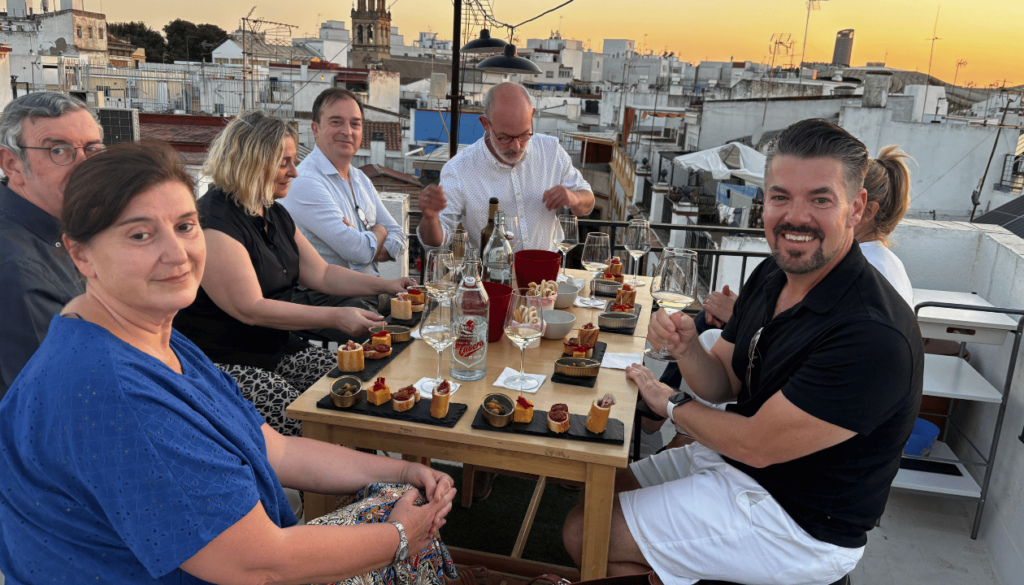
FAQ
Is immersion the best way to learn Spanish?
Immersion is widely considered one of the most effective ways to achieve fluency. When you are constantly using Spanish, you get far more practice than in a classroom. Spanish Express states bluntly that “immersion stands out as the most effective path to mastering Spanish fluency”. Immersion forces you to think, speak, and even dream in Spanish, which accelerates speaking ability. However, “best” can depend on your situation: absolute beginners sometimes start with some classroom study to gain confidence with basic vocabulary and grammar before full immersion. In many cases, the ideal plan is a mix–use classes to build a foundation, then immersion to bring the language to life.
Are Spanish immersion programs worth it?
For most learners who want rapid improvement and cultural experience, yes. Immersion programs provide intensive practice that ordinary courses can’t match. Research shows that immersion students learn the language without falling behind in other areas – they often outperform peers academically. For example, children in immersion classes do “as well as or better than non-immersion peers on standardized measures of reading and math”. Adults, likewise, frequently report big gains. Programs like SHIP emphasize real-life conversation, which “boosts your confidence and communication skills in Spanish”. If you have the time and resources to commit, immersion can yield much faster progress than classroom learning alone.
Should I put my child in a Spanish immersion?
Many educators recommend early immersion for children. Kids are especially good at soaking up a new language intuitively. Research indicates that children in bilingual immersion programs often become balanced bilinguals: they keep up with peers in English and advance quickly in Spanish. They also gain cognitive benefits. For instance, Spanish Express notes that even a short immersion experience can give children better problem-solving skills. In practice, immersion can be a fun, interactive way for kids to learn through play, songs, and cultural activities. Of course, immersion requires commitment from both the child and family, but the long-term advantages – fluency, cultural confidence, academic gains – are usually well worth it.
What is the meaning of immersion learning?
Immersion learning means being placed in an environment where the target language is used for everything, so the student learns through exposure and use. As one definition puts it, “Immersion is an approach to language education that uses a student’s environment as the primary means of teaching.” In simple terms, you learn Spanish the way children learn their first language: by hearing it constantly and using it to communicate. This can happen by studying in a Spanish-speaking country, living with native speakers, attending a two-language school, or even creating an all-Spanish environment at home. The key is that the environment requires the use of Spanish in daily life, so you pick up the language naturally.
Why is immersion better?
Immersion learning often outperforms classroom learning because it offers continuous, contextual practice. In a classroom, you might only hear Spanish during the lesson; after class, you switch back to English. Immersion removes that switch. As noted, immersion isn’t “constantly disrupted by a return to your native language,” allowing you to stay in Spanish mode. This means vocabulary and grammar come more quickly, and your accent improves faster. Immersion also ties language to real situations, so you learn to use it flexibly. You learn cultural nuances (gestures, expressions, humor) that a textbook alone can’t teach. Overall, immersion creates a direct feedback loop: you use Spanish, see whether you’re understood, and immediately adjust. This hands-on cycle helps Spanish “become natural” much faster than classroom drills.
What is the difference between classroom learning and experiential learning?
Classroom learning is teacher-led, happening in a school or classroom with formal instruction. Experiential learning (like immersion) means learning by doing, outside the classroom. In experiential learning, you directly engage with the subject. As Saint Leo University explains, “with experiential learning, you’re taken out of the traditional classroom and immersed in an environment in which the skills you are learning would actively be applied.” In our context, classroom Spanish focuses on lectures and homework, whereas experiential Spanish learning means using Spanish in real life – socializing, traveling, working – to acquire the language. The main difference is passive vs. active learning: classrooms tend to be passive (listening, reading textbooks), while experiential is active (speaking with locals, solving everyday problems in Spanish).

